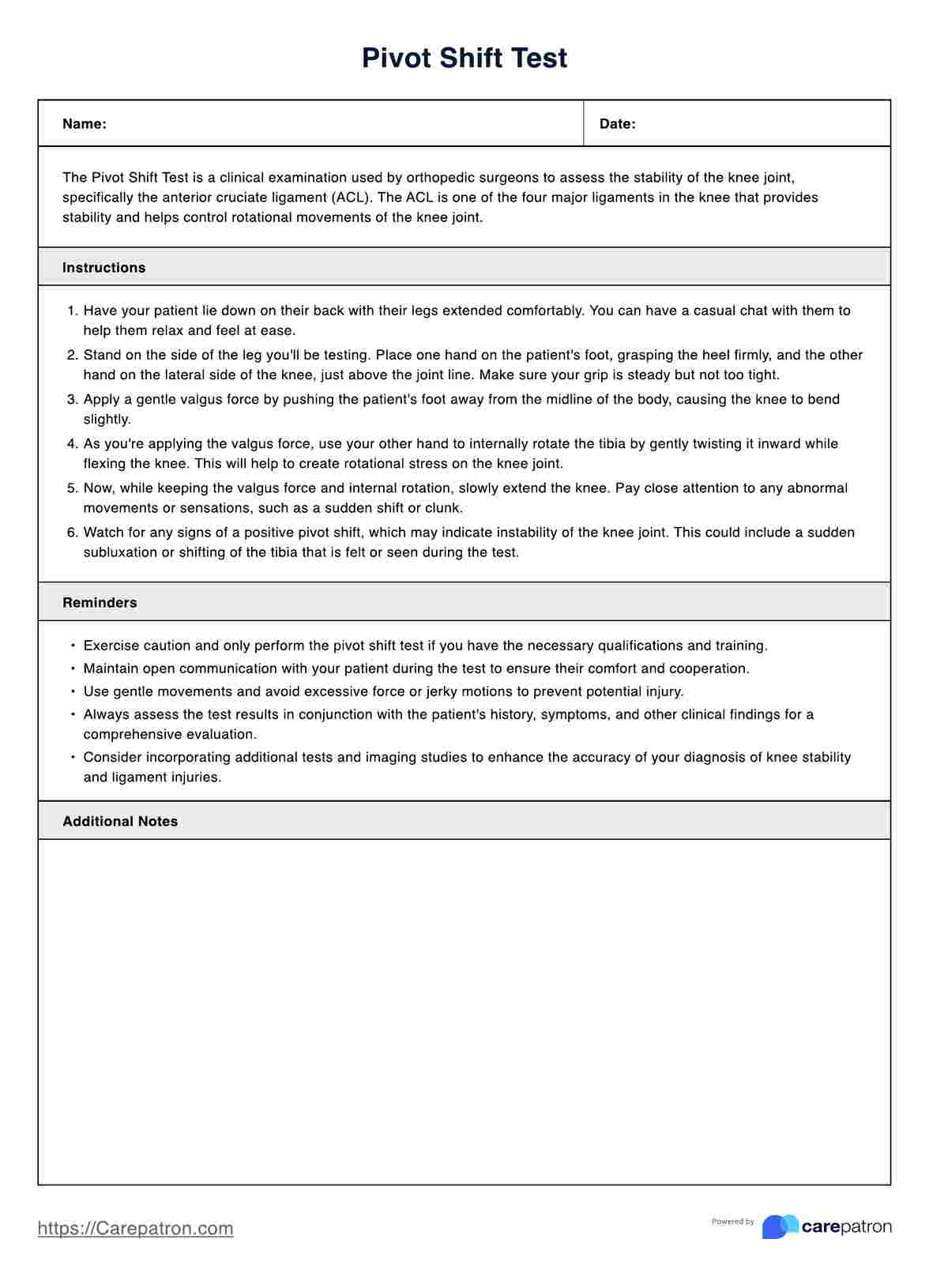The Pivot Shift Test is a physical exam administered by a qualified healthcare professional. It involves assessing the knee joint and the amount of movement it can sustain without causing additional damage. To perform the test, the healthcare provider will apply pressure to the knee joint until a shift is identified.

Pivot Shift Test
Understand the Pivot Shift Test and its role in diagnosing ACL injuries. Download a free PDF template and example to learn more about this assessment.
Use Template
Pivot Shift Test Template
Commonly asked questions
The Pivot Shift Test is an excellent tool for tracking the progress of physical therapy and assessing the condition of a patient's knee joint. It provides objective information that can help healthcare professionals identify any issues with the joint and a treatment plan accordingly.
The Pivot Shift Test assesses the range of motion, strength in the knee joint, and any signs of ACL tears or instability.
EHR and practice management software
Get started for free
*No credit card required
Free
$0/usd
Unlimited clients
Telehealth
1GB of storage
Client portal text
Automated billing and online payments











